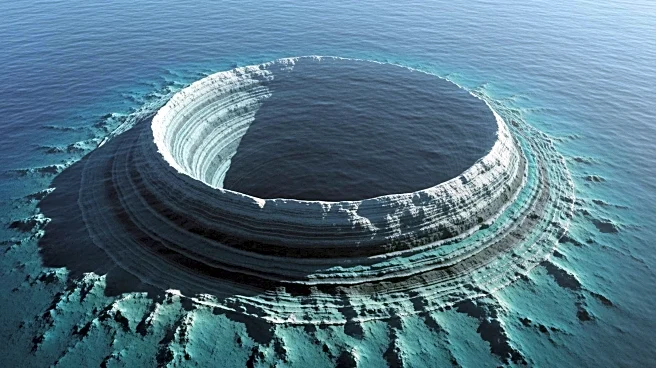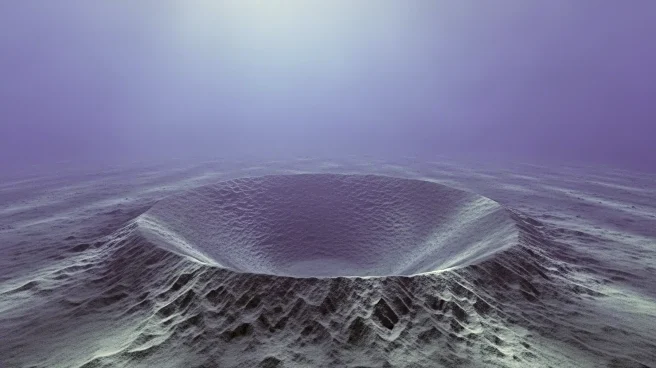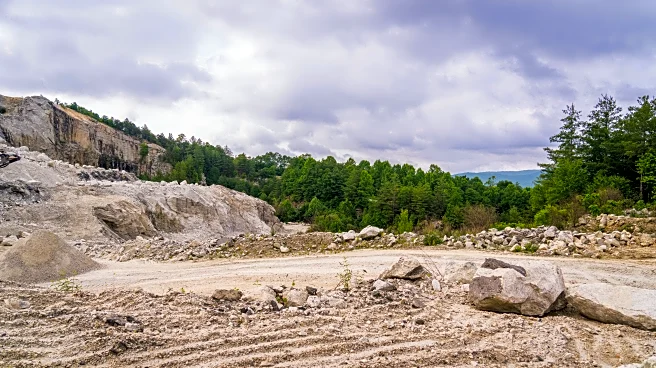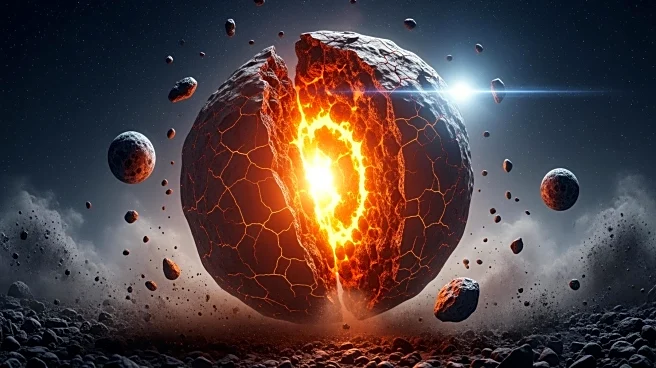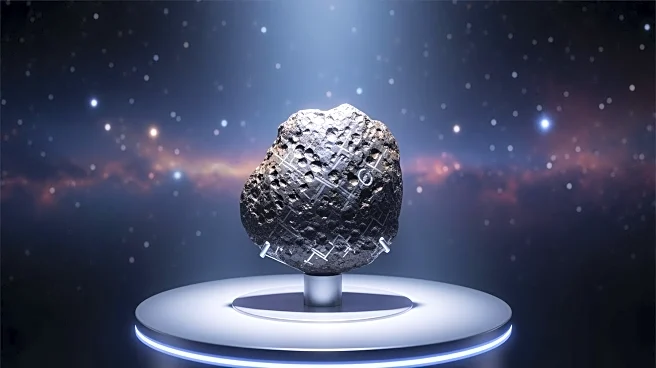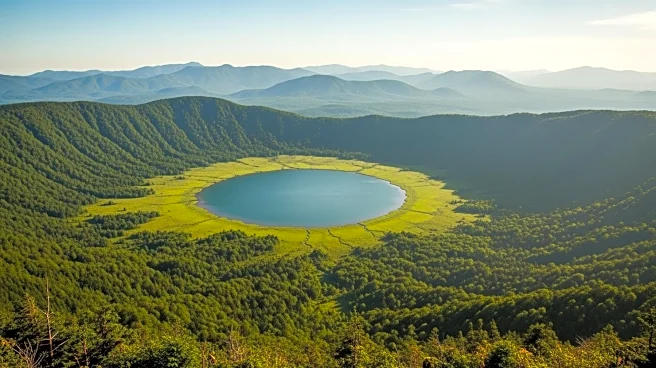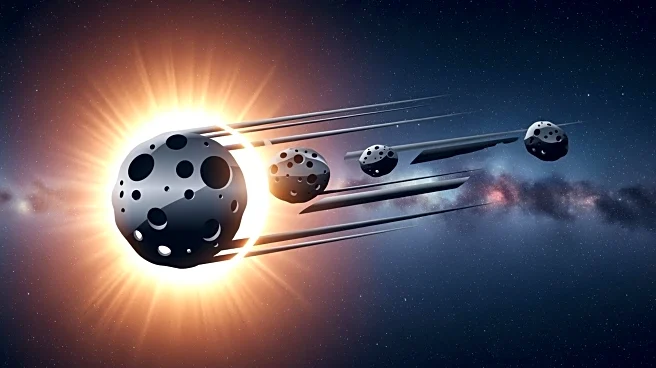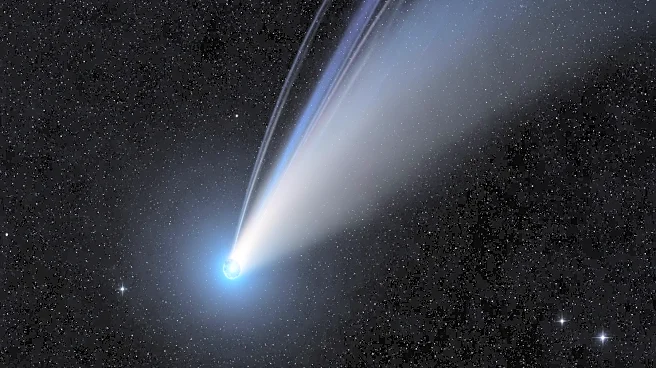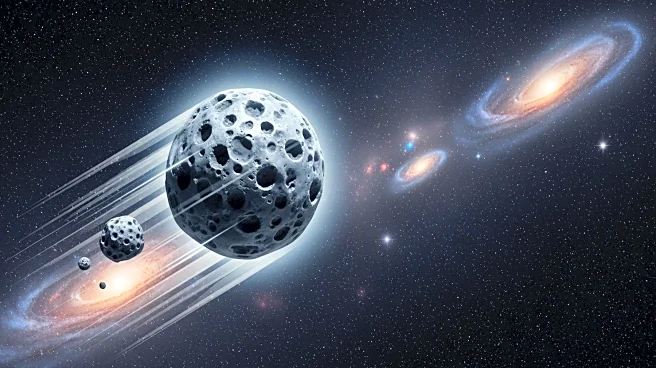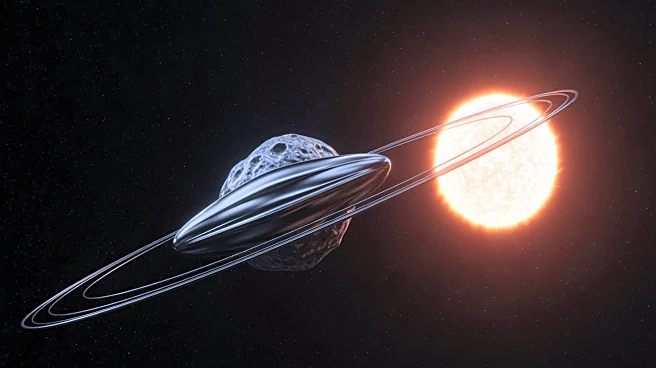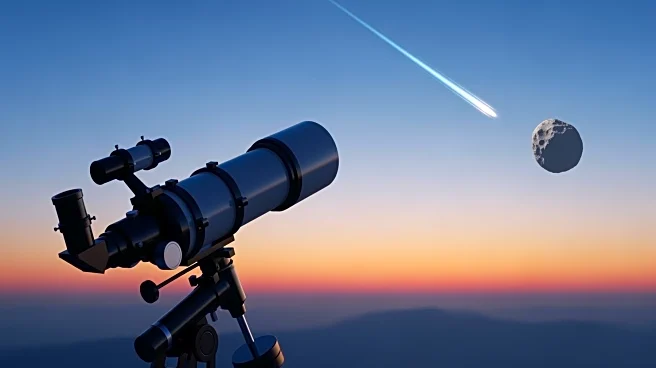What's Happening?
Researchers from Heriot-Watt University have released detailed 3D images of the Nadir Crater, a 5.6-mile-wide asteroid impact site located beneath the Atlantic Ocean. This crater, discovered about 300
meters below the ocean floor, was formed approximately 66 million years ago, coinciding with the Chicxulub impact in Mexico, which is linked to the extinction of the dinosaurs. The new images, published in Nature Communications Earth & Environment, provide unprecedented detail of the crater's structure, revealing a deep bowl shape, molten rock, and a vast zone of fractured rock. The impact also generated a massive tsunami over 800 meters high. Dr. Uisdean Nicholson, who first identified the crater in 2022, collaborated with planetary science and geology experts to confirm the asteroid's impact, which is now believed to have been 450-500 meters wide.
Why It's Important?
The discovery and detailed imaging of the Nadir Crater offer significant insights into asteroid impacts and their effects on Earth. This research provides a unique opportunity to study the formation and consequences of such impacts in a marine environment, which is rarely preserved in such detail. Understanding these processes can help scientists develop better models for predicting the effects of future asteroid impacts. The findings also highlight the potential risks posed by near-Earth objects, such as the asteroid Bennu, which has a small chance of impacting Earth in the future. This research underscores the importance of continued monitoring and study of asteroids to mitigate potential threats to the planet.
What's Next?
The research team has applied to the International Ocean Discovery Program (IODP3) to drill into the seabed and recover cores from the Nadir Crater. These cores will provide more information about the shock pressures experienced during the impact and the precise sequence of events that followed. This data will enhance understanding of impact processes and contribute to the development of new models for crater formation. The study of the Nadir Crater could also inform strategies for planetary defense against potential future asteroid impacts.
Beyond the Headlines
The Nadir Crater's discovery and analysis offer a rare glimpse into Earth's geological history and the forces that have shaped it. The ability to study a well-preserved impact crater in such detail is a valuable opportunity for scientists to test hypotheses about impact processes and their effects on the planet. This research also highlights the importance of international collaboration in advancing scientific knowledge and addressing global challenges, such as asteroid impact risks.
